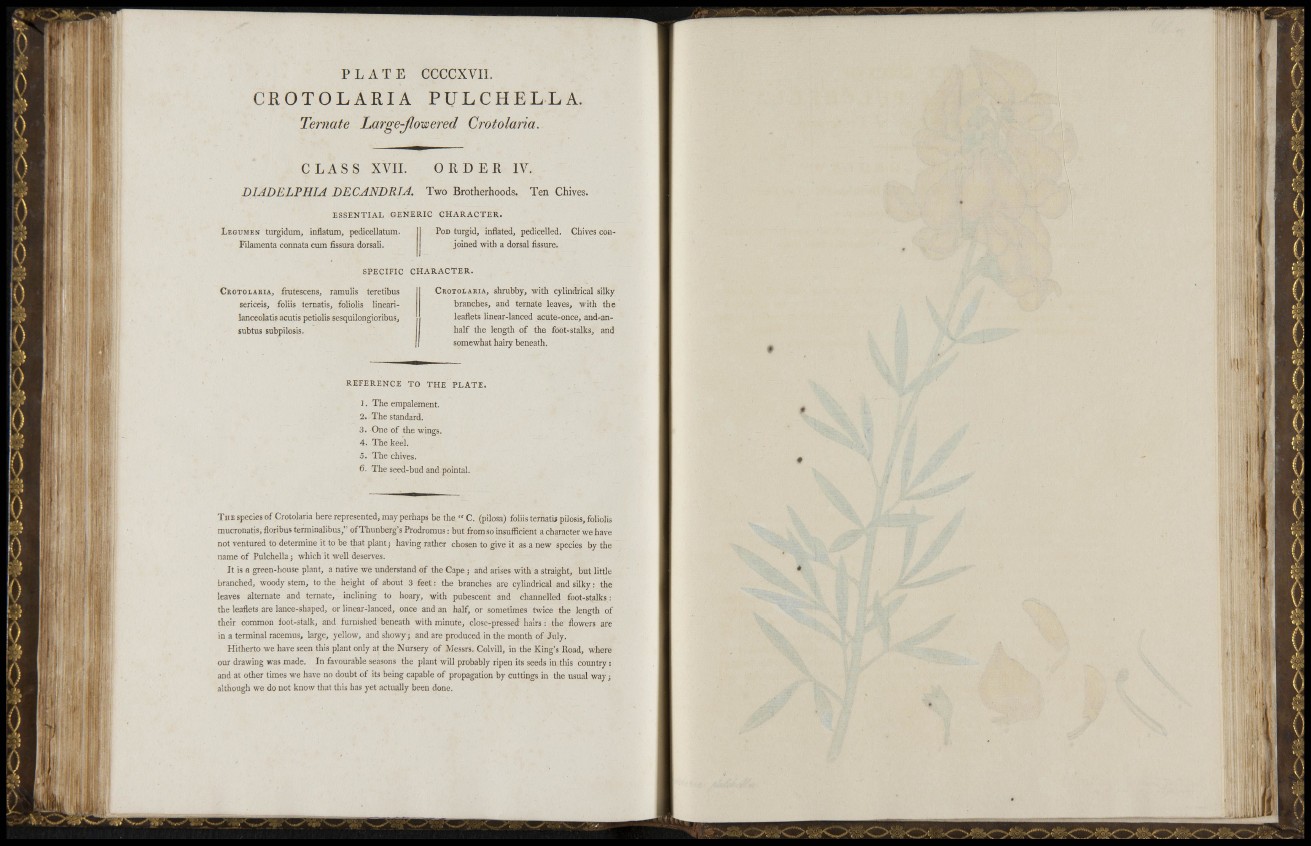
P L A T E CCCCXVIl.
C R O T O L A R I A PULCHELLA.
T e i m a t e L a r g e - ^ o t s o e r e d C r o t o l a r i a .
C L A S S XVII. ORDER IV.
DIADELPHIA DECANDRIA. Two Brotherhoods. Ten Chives.
ESSENTIAL GENERIC CHARACTER.
Legbmen turgidum, inflatum, pedicellatum.
Filamenta connata cum fissura dorsali.
Pod turgid, inflated, pedicelled. Cliives conjoined
with a dorsal fissure.
SPECIFIC CHARACTER.
C r o t o l a h i a , frutescens, ramulis teretibus
sericeis, foliis ternatis, foliolis linearilanceolatis
acutis petiolis sesquilongioribus,
subtus subpilosis,
C r o t o l a b i a , shrubby, with cylindrical silky
branches, and ternate leaves, with the
leaflets linear-lanced acute-once, and-anhalf
the length of the foot-stalks, and
somewhat hairy beneath.
REFERENCE TO THE PLATE.
1. The empalement.
2. The standard.
3. One of the wings.
4. The keel.
5. The chives.
0. The seed-bud and pointal.
T h e species of Crotolaria here represented, may perhaps be the " C. (pilosa) foliis ternatis pilosis, foliolis
mucronatis, floribus terminalibus," ofThunberg' s Prodromus: but from so insufficient a character we have
not ventured to determine it to be that plant; having ratlier chosen to give it as a new species by tlie
name of Pulchella; which it well deserves.
It is a green-house plant, a native we understand of the Cape ; and arises with a straight, but little
branched, woody stem, to the height of about 3 feel: the branches are cylindrical and silky: the
leaves alternate and ternate, inclining to hoary, with pubescent and channelled foot-stalks:
the leaflets are lance-shaped, or linear-lanced, once and an half, or sometimes twice the length of
their common foot-stalk, and furnished beneath with minute, close-pressed hairs : the flowers are
in a terminal racemus, large, yellow, and showy; and are produced in the month of July.
Hitherto we have seen tliis plant only at the Nursery of Messrs. Colvill, in the King's Road, where
our drawing was made. In favourable seasons the plant will probably ripen its seeds in this country :
and at other times we have no doubt of its being capable of propagation by cuttings in the usual way;
although we do not know that this has yet actually been done.
-r
J f
' k'
1 • 4 i ¿i